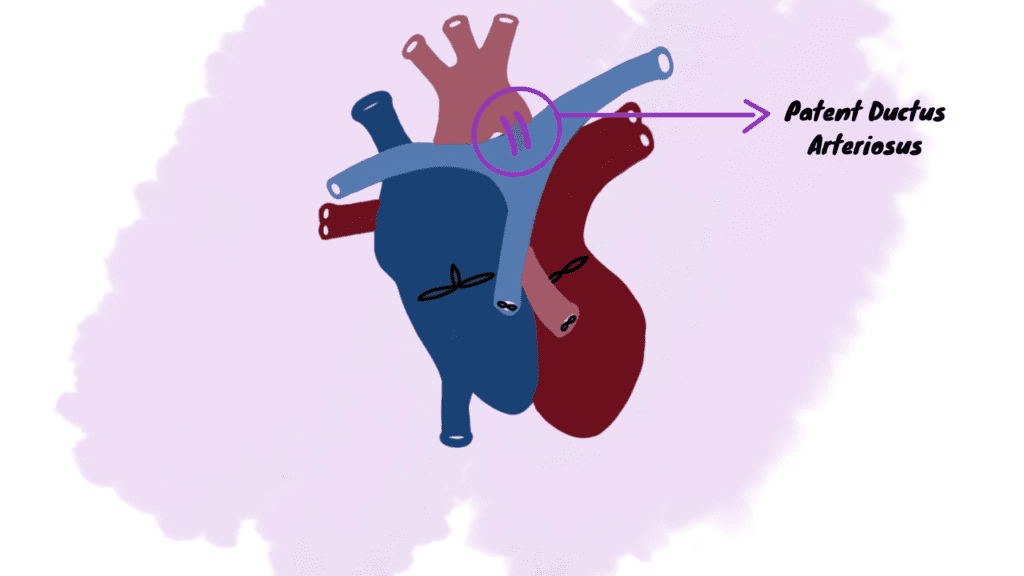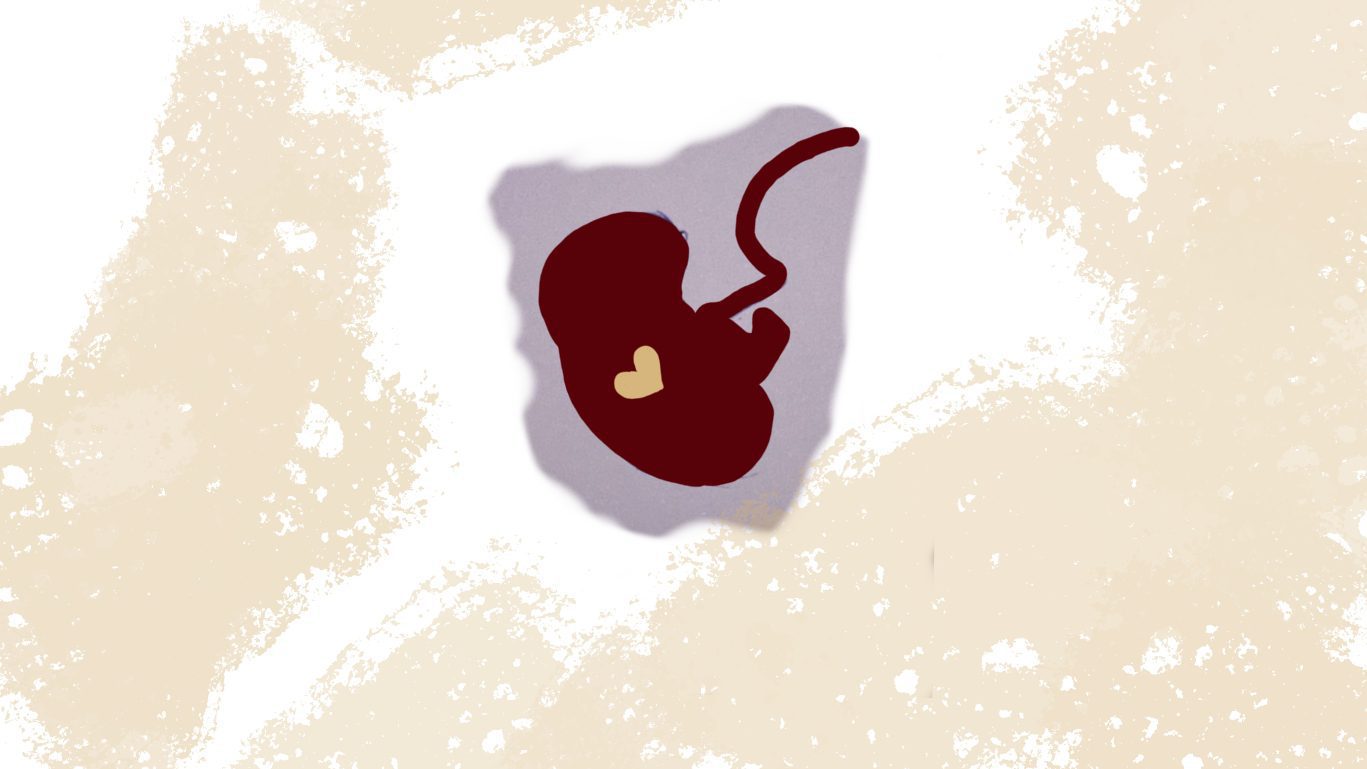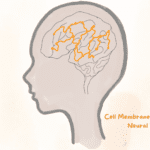PGE1 (Prostaglandin 1) is a synthetic form of Prostaglandin E1 (a chemical naturally produced in the body). PGE1 is a useful medication for some congenital heart defects that rely on ductus arteriosus. PGE1,as a potent vasodilator, helps in the patency of ductus arteriosus (an alternative route for blood flown in some congenital heart defect). Prostaglandins are chemical compounds derived from fatty acids and have significant roles in the human body, including smooth muscle cell regulation, inflammation, and blood clotting.
An Overview of Congenital Heart Defects
Congenital heart defects result when something leads to structural malformation or developmental abnormalities in the baby when it is in the mother’s womb. The causes are broad in nature. We will look at them after the overview of congenital heart defects. These defects have diversity depending upon the type of defect, its location, or the after-effects associated with them. Some most reported congenital heart defects are;
1. Atrial Septal Defect (ASD) and Ventricular Septal Defect (VSD)
These are alike in character. ASD corresponds to the hole or an opening between the left and right atria. Similarly, VSD is due to the hole left behind between both ventricles. Such openings initiate the mixing of oxygenated and deoxygenated blood, leading to complications such as poor blood oxygen capacity .
2. Coarctation of the Aorta
Coarctation is the measure of abstinence in the aorta. The constricted aorta is unable to effectively pump blood to the whole body. Most commonly, coartaction occurs near the ductus arteriosus which disturbs the blood flow to the lower body parts. Ductus arteriosus is the fetal blood vessel that transports blood throughout the body. It allows the blood to pass from the pulmonary artery to the aorta, diverting it from the lungs. It is a component of fetal blood circulation when fetal lungs are not capable of oxygenation.
What Factors Provoke Congenital Heart Defects?
A variety of factors can be the stimulus for developing abnormalities in the fetal heart. Genetics or Chromosomal Aberrations are the most common stimuli for causing congenital disorders. Maternal age and maternal health during pregnancy are crucial. If some chronic condition exists in the mother, such as diabetes affects the health of the fetus too. Apart from these factors which most of the time are not in our control, the environment plays a significant role in the development of congenital heart defects.
Teratogens are substances that can induce disabilities in the fetus when the mother is exposed to them. Read the complete blog: What are teratogens? How do they affect the fetal health? Alcohol and tobacco smoke are the most common and potent teratogens. You can read the whole mechanism of how such teratogens affect the baby’s health.
General Treatments
More than a single treatment is suggested for congenital heart defects. The type and effectivity of treatment depend upon the severity of the defect. Medications are the primary route for treating such defects. As these defects most of the time are surgical, so medicines can’t provide a definite or prolonged treatment. They are used for temporary relaxation. Ultimately, surgery and catheter-based treatment serve as the permanent methodology for cure.
PGE1 As a Medicine For Congenital Heart Defects
Prostaglandin E1 (PGE1) is the natural prostaglandin produced in our body. PGE1 is also taken in synthetic form as a medicine. PGE1 has the potency to relax smooth muscle cells. In this particular context, PGE1 causes the dilation of ductus arteriosus. Naturally, ductus arteriosus closes after birth due to its obsolete role in cardiac activity. But in ductal-dependent lesions, ductus arteriosus has to function normal like it used to do in the fetal circulation.
Understanding the Concept of Patent Ductus Arteriosus
Patent ductus arteriosus means an open ductus arteriosus. Ductus arteriosus is the small passage or a vessel that connects pulmonary arteries to aorta. Ductus arteriosus is functional when baby is in the uterus of mother and his lung are not functional for oxygenation. If ductus arteriosus fails to close after birth, it provokes the mixing of oxygenated and deoxygenated blood.
As it carries blood directly from the right ventricle through the pulmonary artery and directs it into the aorta, there is no oxygenation of blood in the lungs. Its closure is compulsory to avoid any circumstance like this. Such a failure of proper sealing of ductus arteriosus leads to Patent Ductus Arteriosus. After birth, fetal lungs become functional; therefore, ductus arteriosus closes naturally.

HLHS And The Patency of Ductus Arteriosus
Hypoplastic Left Heart Syndrome (HLHS) is a congenital heart defects and a ductal-dependent lesion. Ductal-dependent lesions are those serious abnormalities that are related or dependent upon the functioning of ductus arteriosus. HLHS arises due to the inefficient working of the left heart side (the left ventricle and aorta). The left ventricle and aorta are not competent to force blood to the systemic circulation. Ductus Arteriosus provides an alternative pathway for blood flow into the systemic circulation. Ductus arteriosus redirects blood volume from the right ventricle into the aorta or systemic circulation. It does not allow the blood to pass through the lungs or left ventricle.
When baby’s lungs are not functional in the mother’s womb, ductus arteriosus is the main pathway for directing blood into the whole body. Baby receives oxygenated blood from the mother’s circulation and redirects the blood into his circulation. But when a baby’s lungs become functional, ductus arteriosus closes and turns into ligamentum arteriosum. The incompetency of the left ventricle to supply blood to the whole body in HLHS requires the functioning of ductus arteriosus to provide an alternative pathway for supplying blood to the body. In this aspect, PGE1 plays its part in the patency of ductus arteriosus.
Working Mechanism of PGE1 For Ductus Arteriosus Patency
PGE1 works in a way to minimizes the muscle contractions of smooth muscle cells. Calcium plays the dominant role in regulating muscle contractions. High intracellular calcium levels allow muscular bands to come together and make a muscle contract. So, PGE1 acts in a way to alleviate the intracellular calcium concentration. PGE1 binds to the EP4 receptors on smooth muscle cells of blood vessels. These EP4 receptors spur the formation of cyclic AMP (cAMP) molecules from ATP molecules by enzymatic activity. Increased production of cAMP molecules activates a specific enzyme – Protein Kinase (PKA). The primary function of protein kinase is adding phosphate groups to target proteins (phosphorylation).
In the realm of the PGE1 working mechanism, protein kinase targets calcium channels. Calcium channels are the proteins that regulate the influx of calcium ions into muscle cells. Calcium channels as protein pores (pores act as a path to let calcium ions into the cell) are embedded in the cellular membranes and are responsive to specific stimuli. Protein kinase causes the phosphorylation of these protein channels (the specific target proteins) and modulates their activity. It leads to the conformational changes of calcium channels and makes them less responsive to stimuli.
Ergo, intracellular calcium levels (calcium levels inside cells) fall and the muscle cells are less able to contract. In this way, they remain more in a relaxed state and keep the blood vessels open. PGE1 acts as a vasodilator of smooth muscle cells (involving ductus arteriosus) and the above mechanism explains its working action.
To Wrap it Up
PGE1 provides a reliable alternative path for blood flow in complicated situations. Hypoplastic Left Heart Syndrome (HLHS) is just one such situation. Like many other medicines, PGE1 also has some drawbacks. The condition of its continual supply for maintaining the patency of ductus arteriosus is the biggest challenge. Due to its vasodilatory effects, its discontinued supply may impose disturbing effects on the blood circulation.
The pressure inside pulmonary arteries rises due to an increase in the vascular tone of pulmonary arteries. Due to increased resistance in pulmonary arteries, the heart has to force blood with more vigor which may further worsen the patient’s situation. Additionally, PGE1 infusion is also associated with breathing problems, particularly apnea. Thus, PGE1 infusion demands ts great care and monitoring. Its continual supply is essential for maintaining the patency of crucial arteries in blood circulation.
PGE1 is not a competent treatment for ductal-dependent lesions, it can only provide a temporary solution by facilitating the blood to pass through an alternative path. Medications can never be the ultimate treatment for congenital heart defects. Advanced stages with serious complications require surgical treatments.
Seek a Professional Advice
This blog is only for providing information about the working mechanism of PGE1, it’s compulsory to seek a professional advice before taking or terminating any medication.




